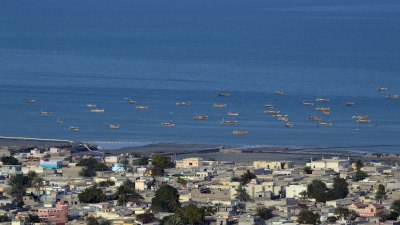The Travel Planning Secrets of Big Families
Discover the ultimate travel planning secrets that make traveling with big families easier and more enjoyable.

Image by studiopeace on Freepik
Traveling with a big family can often seem like a daunting task, filled with numerous challenges and potential pitfalls. However, with a bit of forethought and organization, it can also be one of the most rewarding experiences. This article will dive deeply into the essential secrets that can make travel planning for big families not just manageable but enjoyable. We'll discuss various strategies on everything from choosing the destination to finding accommodations, transportation, budgeting, and creating itineraries that cater to everyone’s needs.
Choosing the Right Destination
The first step in successful travel planning for big families is selecting a destination that caters to the interests and needs of all family members. It’s essential to involve everyone in the decision-making process to ensure that each person feels represented in the plans. Consider destinations that offer a variety of activities and attractions, such as theme parks, beach resorts, or travel-friendly cities with rich cultural experiences. Research locations that have family-friendly amenities and are known for accommodating large groups.
Planning Ahead: The Key to Success
Once the destination is selected, start planning as early as possible. Early planning provides the opportunity to secure the best accommodations, rentals, and transportation options that cater to large groups. Look for family discounts and packages that can reduce costs significantly. Setting a timeline can streamline the planning process, breaking it down into manageable tasks that can be tackled over time.
Accommodations That Work for Everyone
When traveling as a big family, finding the right accommodations can make a world of difference. Instead of booking multiple hotel rooms, consider vacation rentals, condos, or cabins that can accommodate the entire family in one space. Websites such as Airbnb and Vrbo offer a variety of options that can fit into any family's budget. Look for places with kitchen facilities to save money on meals and give the family a chance to enjoy dinner together after a day of exploration.
Transportation Considerations
Transportation logistics can be a challenge for large families. Starting with the choice of how to get to your destination, evaluate the options available based on comfort and cost. Flying can be the quickest option, but it often incurs additional fees for baggage and seat selections. Road trips can provide flexibility and create memorable experiences, but make sure to drivers are prepared for longer durations. If it's feasible, consider rental vans that can comfortably seat everyone, making travel more enjoyable.
Food and Dining Strategies
Creating an Itinerary
Crafting a detailed itinerary is crucial for ensuring that the trip runs smoothly. Gather input from all family members regarding their interests to create a balanced schedule that includes activities for everyone. While flexibility is always key, having a general outline of daily activities will help keep the group focused while still allowing for spontaneous fun. Make sure to incorporate rest periods and downtime, especially for younger kids or grandparents who might need a break after a busy day.
Engaging Kids in Planning
Involving children in the travel planning process not only gets them excited about the trip but also helps them learn valuable organizational skills. Assign them tasks such as researching attractions or finding fun activities in your chosen destination. Older kids can help with booking processes by comparing prices for accommodations or attractions. This approach fosters a sense of ownership over the trip and ensures they feel included in the fun.
Simplifying Packing
Packing for a big family can quickly turn into chaos, but organization is key. Create a comprehensive packing list and share it among family members to divide responsibilities. Consider packing versatile clothing that can be layered and mixed to reduce the number of items each person needs. Don’t forget essentials like a first-aid kit, chargers for devices, and travel documents. To save space, roll clothes instead of folding them, and use packing cubes to keep everything organized.
Staying Connected While Traveling
For families traveling with children or adolescents, keeping a communication plan is vital. Set specific meeting points in case someone gets separated during outings. Older kids should have a way to communicate with parents, whether through phones or personal walkie-talkies. Discuss guidelines for online safety if they are allowed to use devices during the trip. This open line of communication can alleviate stress and enhance the safety of your travel experience.
Handling Unexpected Situations
No matter how well-planned your trip is, unexpected situations can arise. Prepare for potential bumps in the road by implementing contingency plans for each day. Having a rough idea of local hospitals, urgent care centers, or other resources can relieve anxiety. Make sure to keep a travel insurance policy if possible, which could save you money if emergencies arise. Additionally, be prepared to pivot plans in response to weather changes or circumstances out of your control.
Budgeting for Big Families
Establishing a realistic budget based on your destination is paramount. Consider all features such as travel, lodging, food, and activities while allocating funds appropriately. Seek out family discounts or group rates for attractions and accommodations, which can cut costs substantially. Usage of budgeting apps can make the process easier, allowing you to track expenses in real time. Building in a buffer for unexpected expenses will provide flexibility and peace of mind.
Capturing Memories
Consider how you will document your travels as a big family. Assign one family member to be the designated photographer or set up a plan for rotating the role. Encourage each family member to keep a travel journal where they can share their thoughts and experiences. Creating a shared photo album post-trip can be a fun family activity, allowing everyone to relive the memories together. Consider utilizing mobile applications that allow for collaborative albums, making it easier to share digital photos.
Respecting Each Other's Space
On any trip, having some personal space can be extremely important, especially when traveling with a large family. Make it a priority to ensure everyone has downtime. Kids can be scheduled for quiet time after an exciting day, allowing parents to recharge too. Structuring days that offer breaks provides opportunities for personal exploration within the destinations and encourages independence, particularly among older children.
Reflecting on the Trip
After returning home, take the time to reflect on what went well and what could have been improved for next time. Have a family meeting to discuss the highlights and lowlights of the trip, enabling family bonding even after returning home. Sharing experiences helps to foster family connection and define traditions for future trips, allowing everyone to look forward to more adventures together.
Traveling with big families presents unique challenges, but with the right planning and consideration for everyone involved, it can turn into an incredibly positive experience. Through effective communication, cooperation, and flexibility, your trip can become a bonding experience that creates memories for years to come. Keep these strategies in mind, embrace the chaos, and enjoy your next family vacation!











